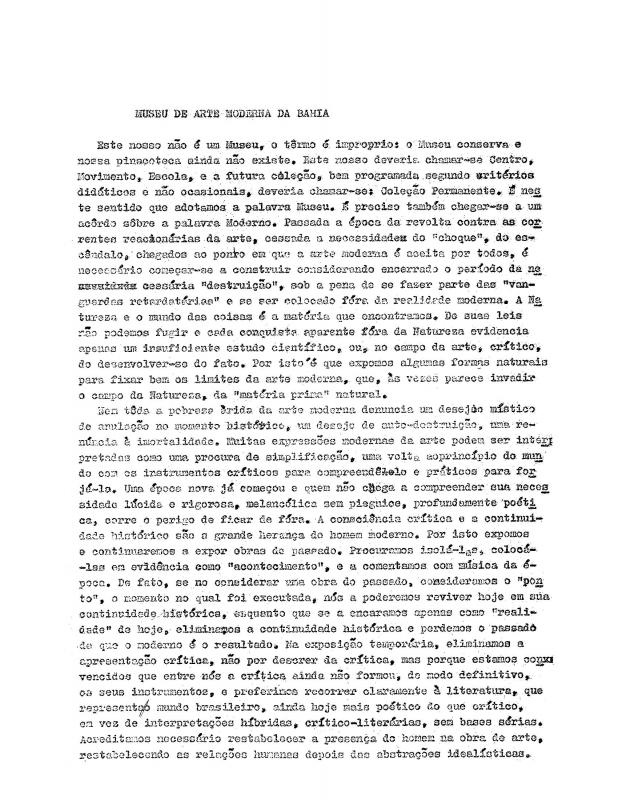This article documents the author’s critical view of the close ties between technology and art in the contemporary world. It discusses the emergence of a strain of Concrete art in Brazil in the fifties and early sixties, and points out the visual importance of the engines and industrial parts on display at MAMB.
In the early fifties, Italian born author and architect Lina Bo Bardi (née Achillina Bo, 1914−92), who lived in Brazil, directed the art magazine Habitat that was published by the Museu de Arte de São Paulo (MASP). In 1951, she, and her husband Pietro Maria Bardi (1900−99), who was curator and director of MASP, began at the museum the industrial design department Instituto de Arte Contemporânea (IAC), where she taught. She lived in Salvador, Bahia, from 1959 to 1964, the years that she directed the Museu de Arte Moderna da Bahia (MAMB). Her work as the head of programming and education at MASP, and later as the director of MAMB, demonstrate her commitment to art historical exhibitions. She was also responsible for organizing exhibitions with a wide range of contemporary artists from Brazil and elsewhere, and for efforts that placed emphasis on popular culture from northeastern Brazil. Bo Bardi advocated organizing courses in art, music, cinema, and theater, and workshops in industrial design and crafts. Her work energized the art scene from this region of Brazil and allowed local artists to come into contact with major figures in contemporary art. In 1963, the Museu de Arte Popular was opened with pieces from different regions of the country.
For a related text, see Lina Bo Bardi’s “O Museu de Arte Moderna da Bahia” [doc. no. 1110860].
For additional information, see Lina Bo Bardi’s “O Instituto de Arte Contemporânea surge…”, informational pamphlet, c. 1950, and “O Museu de Arte Moderna,” Diário de Notícias, Salvador, October 18, 1959; Glauber Rocha’s “MAMB Não é Museu: é Escola e Movimento. Por uma Arte Que Não Seja Desligada do Homem,” September 21, 1960; and Jacob Ruchti’s “Instituto de Arte Contemporânea,” HABITAT no. 3 (1951).

